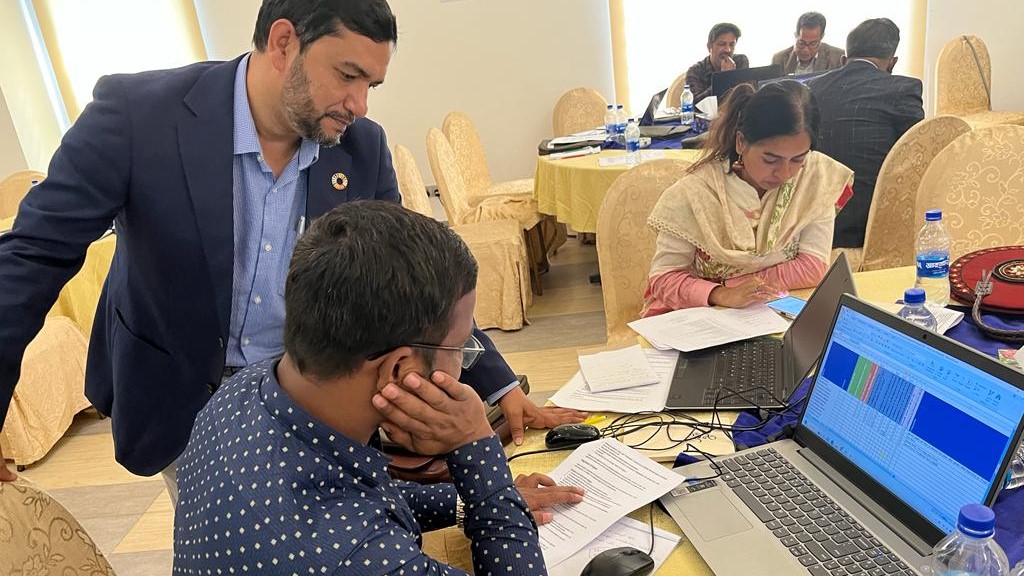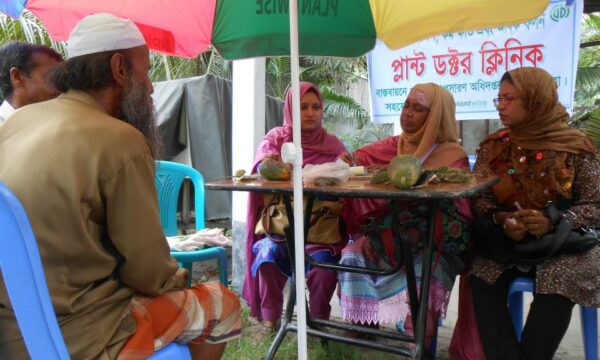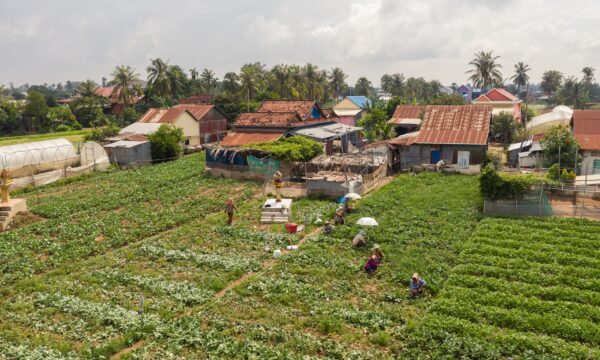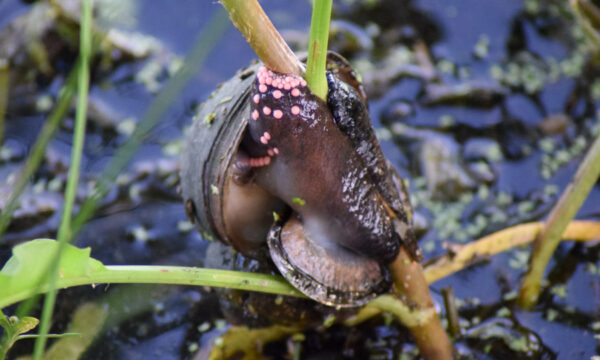
PlantwisePlus recently led a workshop in Bangladesh focused on building capacity on the prioritization of invasive alien threats and pest risk analysis using CABI decision support tools.
PlantwisePlus facilitated a two 2-day each training workshops in Bangladesh on horizon scanning and pest risk analysis (PRA) respectively. A number of CABI staff travelled to Dhaka to support the training and connect with national partners on the ground.
Dr Malvika Chaudhary, Regional Coordinator Asia, PlantwisePlus led the training on horizon scanning. Dr Manju Thakur, Regional Coordinator Asia, Knowledge Bank, led the training on PRA.
25 individuals did horizon scanning to prioritize pests. Participants came from a range of national stakeholders including the Plant Quarantine Wing, Department of Agricultural Extension (DAE), the National plant protection organization (NPPO) and local universities. Subsequently, additional experts who are actually involved in doing PRA in Bangladesh joined the PRA workshop.
What did the workshop cover?

For the prioritization exercise of potential invasive alien threats for Bangladesh via CABI Horizon Scanning Tool (HST), country experts, Dr Norman Farooq and Dr Shaefullah covered pests under two broad categories each: pathology and entomology respectively. The workshop participants were divided into these two groups, each presided over by the lead expert. This exercise led to an output of a pest list of the potential invasive pest threats. The top pests from the list were selected for practicing pest-initiated PRA during the following two-day PRA workshop.
To set the background for the PRA, Dr Thakur gave an overview of the International Plant Protection Convention’s (IPPC) International Standards for Phytosanitary Measures (ISPMs). The aim of the IPPC is to protect plants, prevent the spread of pests, and promote fair and safe trade. ISPMs, especially numbers 2, 11, and 21, provide guidance on the three stages of PRA: initiation, risk assessment, and risk management
The participants learnt about the principles and importance of horizon scanning for invasive threats and PRA. And specifically, they learned how to use CABI’s decision support tools: PRA Tool and Horizon Scanning Tool (HST).
How are pest risk analysis and horizon scanning related?
Using information from CABI Compendium datasheets, the Horizon Scanning Tool helps identify potential risks by showing species that are absent from the selected ‘area at risk’ but present in ‘source areas’.
These ‘source areas’ could be countries neighbouring countries, countries linked via trade or transport routes, or countries that share similar climates.
By identifying and categorizing species that are likely to enter a particular geographic area from another, horizon scanning works hand-in-hand with PRA.
Scanning and prioritizing potential invasive threats

In their two groups, pathology and entomology, participants were put into pairs and given an allotted list of pests. Together they used the HST and CABI Compendia to give each species a score. Dr Chaudhary and local experts helped participants to understand the various criterion to give scores to specific species.
By the end of the task, the group had developed two lists of priority pests for Bangladesh. The lists will be reviewed and verified by more subject experts before being finalized.
What is pest risk analysis and why is it important?
PRA is the process of evaluating biological or other scientific and economic evidence to determine whether a pest should be regulated. And then the strength of any phytosanitary measures to be taken against it.
PRAs are science-based and provide rationale for implementing phytosanitary measures for a specified area. They offer a systematic approach to help plant health actors decide if a pest should be managed using legislation.
Therefore, robust PRA is crucial for countries to be well-prepared for and protect themselves against transboundary pests. PRA supports the principles of IPPC.
Practical pest risk analysis training
PRAs are used to evaluate and manage risk from specific pests and internationally traded commodities. The workshop participants learnt about when to initiate a PRA and undertook practical training on two different initiations over the two days.
On the first day, the group practiced a pest-initiated PRA. This would take place following a number of pest-led situations such as detection of a pest in consignments or if a request has been made for a pest to be imported for research, amongst others.
Plus, they attempted one demo pest PRA for select pests rated high-risk for the country in horizon scanning. They practiced a PRA on red palm mite.
On the second day, the group started a pathway-initiated PRA. These are undertaken when new trade pathways open up. They show pathways that present a potential risk. The participants practised with the real example of “import of coconut seedlings from India”.

The future of pest risk analysis in Bangladesh
The group said that they felt confident to attempt PRAs and were keen to participate in the second extended workshop later in the year so they could start real PRAs for priority import commodities. Most of the group were also positive about the HST but offered some insightful suggestions for improvement such as a score to rate the spread of the pest as slow or fast.
Mr. Dr. Md. Rezaul Karim (Director, Plant Quarantine Wing) chaired the workshop’s closing ceremony. He expressed his gratitude to CABI facilitators for strengthening the capacity of different stakeholders in the country on the very critical topic on horizon scanning and pest risk assessment.
The NPPO in Bangladesh plan to identify up to 10 officers to conduct PRAs. CABI has already shared the NPPO access details for their gratis access.
Find out more about CABI’s knowledge resources and tools for plant health.
Read more
CABI leads regional workshop on Pest Risk Analysis tool in Bangladesh
PlantwisePlus boosts crop health in Bangladesh
CABI facilitates Pest Risk Assessment writeshop in Nepal
Pest Risk Analysis workshop: spotting Pakistan’s potential invaders
Acknowledgement
The CABI-led PlantwisePlus programme is financially supported by the Directorate-General for International Cooperation (DGIS), Netherlands; European Commission Directorate General for International Partnerships (INTPA, EU); the Foreign, Commonwealth & Development Office (FCDO), United Kingdom; the Swiss Agency for Development and Cooperation (SDC); the Australian Centre for International Agricultural Research (ACIAR); the Ministry of Agriculture of the People’s Republic of China (MARA)
All images courtesy of Manju Thakur
Related News & Blogs
How do pest risk registers address the spread of plant pests in Africa?
Pest risk registers can help to solve problems in agriculture, addressing the growing global threat of plant pests. Moreover, changing weather patterns, led by rising temperatures, are causing them to reproduce faster and expand into new regions. In ad…
10 July 2025




